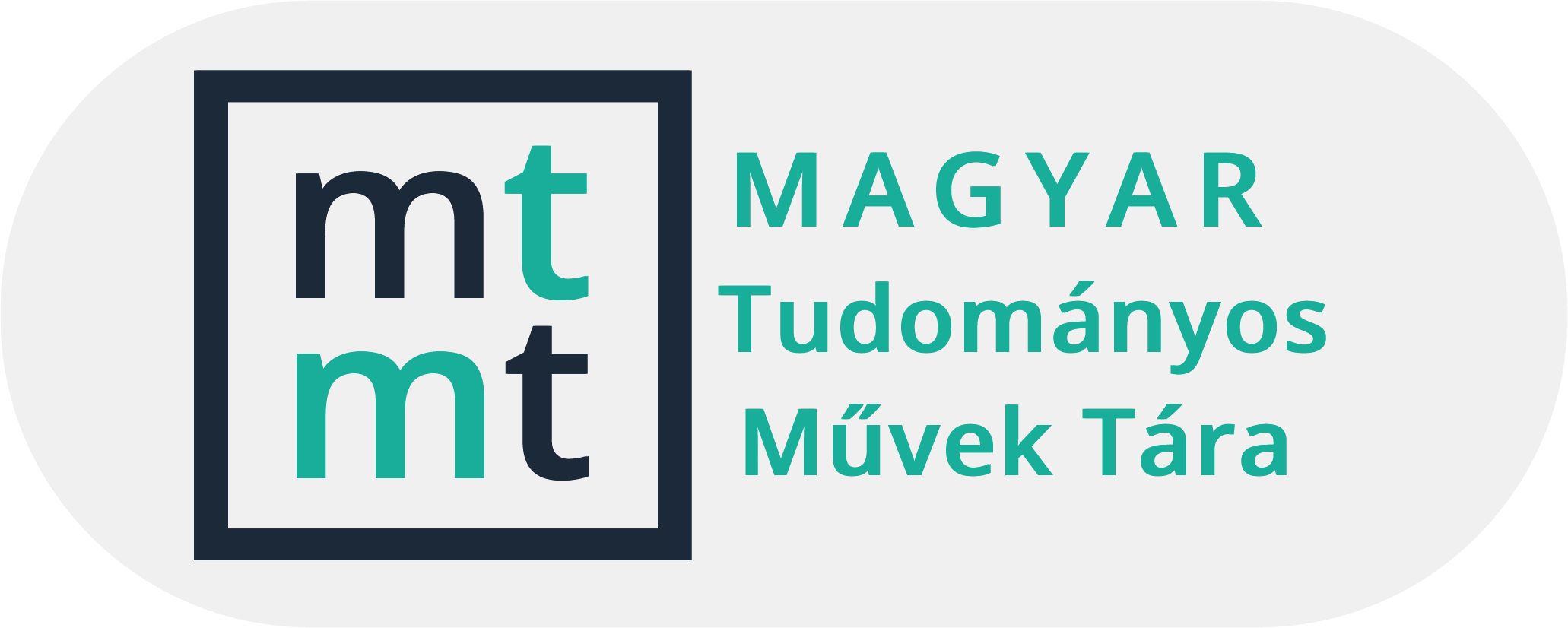Szemináriumok, intézetek, klinikák vezetői és szakelőadók a debreceni tudományegyetemen (1914–1950)
Keresés
Keresési eredmények
-
KÁDÁR LÁSZLÓ FÖLDRAJZ PROFESSZOR, A KOSSUTH LAJOS TUDOMÁNYEGYETEM 1954/55. TANÉVI REKTORA
15-32Megtekintések száma:72Kádár László 1947-től nyugdíjba vonulásáig (1978) az egyetem professzoraként működött. Időközben a Bölcsészettudományi Kar prodékánja, 1952–1954 között a Természettudományi Kar dékánja, majd 1954/55-ben az egyetem rektora volt. Egyetemi oktatói karrierjét gazdagodó tudományos eredményei és kiváló tanári talentuma mellett főleg széles látókörű, szaktudományából messze kitekintő szellemiségének és rendkívül energikus, határozott impulzív alkatának, kiváló vitakészségének köszönhette. Jó kapcsolatokat ápolt az intézeti és az egyetemi munkatársakkal.
-
A Debreceni Kossuth Lajos Tudományegyetem archontológiája 1950-1990 V. rész
167-214Megtekintések száma:87THE ARCHONTOLOGY OF LAJOS KOSSUTH UNIVERSITY OF ARTS AND SCIENCES, PART V: INSTITUTE OF CHEMISTRY (1950–1990). he Archontology of Kossuth University for the School of Arts, the School of Sciences, and for the So-Called ”Central Units” between January 1, 1950, and December 31, 1990, was compiled on the basis of the personal cards and personal iles of the Personnel Department of the Rector’s Oice, and the scantily documented section for the 1950s was supplemented from the annually arranged documentary
material of the Personnel Oice. Even so, however, the existing material fails to be complete. It is impossible to compile the archontology with perfect accuracy. Part V introduces the updated lists of the teaching and non-teaching staf of the Department of Chemistry, School of Sciences, from institute director to janitor. -
Felsőoktatási és tudományos intézmények képviselete a magyar Országgyűlés Felsőházában 1927-1944
79 - 93Megtekintések száma:236Representation of the Higher Educational and Scientific Institutions in the Upper House of the Hungarian Parliament in 1927–1944. The Upper House, what was the second chamber of the Hungarian Parliament, was functioning between 1927 and 1944 and followed the image of the Main House (House of Magnets) before 1918, but operated in a more democratic spirit and structure. Besides the aristocrats and the leaders of the church, the representatives of the higher educational and scientific institutions, and economic organizations deserved a place. The study overviews the Upper House representation of the Hungarian Academy of Sciences, universities in the capital and in the country, other scientific organizations, and other institutions of higher education, and there is enclosed a list of the representatives of the above mentioned institutions exactly to the day.
-
A debreceni KLTE archontológiája II. Matematikai Intézet (1950–1990)
117-141Megtekintések száma:95ARCHONTOLOGY OF THE KOSSUTH UNIVERSITY OF DEBRECEN 1950–1990 2. PART. INSTITUTE OF MATHEMATICS. he archontology of the Faculties of the Natural Sciences and the central units of the Kossuth University between January 1, 1950 – December 31 was prepared on the basis of the personal documents of the Human Resources of the Rectorate supplemented by the chronological documents of the Human Resource Department. he existing documents are not complete, therefore the archeontology cannot be drawn up completely. he second part introduces the teaching and administrative staf of the Institute of Mathematics in chronological order including everybody from the head of the institute to the administrator.
-
ZICHY ERNŐ VEGYÉSZMÉRNÖK SIKERTELEN ALKALMAZÁSA AZ EGYETEMI KÍSÉRLETI FIZIKAI INTÉZETHEZ ÉS AZ ATOMKI-HOZ 1954-BEN
134-137Megtekintések száma:98A második világháború utáni évtized az atomkutatás fénykora volt, hiszen a nagyhatalmi versengés területévé vált. Szalay Sándor, a debreceni egyetemi Kísérleti Fizikai Intézet tanszékvezető professzora és egyben a Magyar Tudomány Akadémia Atommagkutató Intézetének vezetője ügyesen használta ki a konjunktúrát és sok jó szakembert tudott alkalmazni, köztük olyanokat is, akiket az akkori államhatalom félreállított. Azonban a Zichy Ernő vegyészmérnököt – akit korábban kitelepítéssel is büntettek – arisztokrata származása miatt neki sem sikerült egyik intézetébe sem felvennie.
-
Neuber Ede Bőrgyógyászprofesszor, a debreceni m. kir. Tisza István Tudományegyetem 1931/32. Tanévi Rector Magnificusa
23-33Megtekintések száma:160Ede Neuber, Professor of Dermatology, the Rector Magnificus of the Hungarian Royal István Tisza University of Debrecen during the Academic Year 1931/32. Professor Ede Neuber was the organizer and first director of the Clinic of Dermatology and Sexual Pathology, and nationally, it was he who first organized the health supervision of university students. Again, he took part in spearheading the campaign against venereal diseases also through curtailing epidemic diseases by means of creating a law (lex veneris).
In the 1931–1932 academic year he was Rector of Debrecen’s István Tisza University. During his rectorship, the Main Building of the University was completed and inaugurated, and the university took over the city’s public hospital for the purposes of training and practice. From 1936 through 1938 he represented the university in the upper house. In 1938 he was appointed principal professor of the clinic of dermatology of Budapest’s Péter Pázmány University, so he left Debrecen. -
A Debreceni Kossuth Lajos Tudományegyetem Archontológiája 1950-1990 XV. (befező rész): Idenenyelvi Lektorátus
131-135Megtekintések száma:168A Kossuth Lajos Tudományegyetem két kara, a Bölcsészettudományi Kar és a Természettudományi Kar, valamint az ún. központi egységek 1950. január 1. és 1990. december 31. közötti archontológiáját a Rektori
Hivatal személyi kartotékjai és anyagai, valamint a kevésbé dokumentált ’50-es évek tekintetében kiegészítőleg a Személyzeti Osztály éves kimutatásai alapján készült. Ennek ellenére a rendelkezésünkre álló
anyag nem lehet teljes és nem lehetséges teljes pontossággal összeállítani az archontológiát. Jelen XV. rész az Idegennyelvi Lektorátus dolgozóinak listáját adja a lektorátus vezetőtől az ügyintézőig. -
A debreceni Kossuth Lajos Tudományegyetem archontológiája (1950–1990) IV. rész
130-147Megtekintések száma:93ARCHONTOLOGY OF LAJOS KOSSUTH UNIVERSITY IV.: INSTITUTE OF HISTORY (1950–1990). he archontology of the Arts and Sciences Faculties of Lajos Kossuth University -the so-called central units of the university between Januar1, 1950–December 31, 1990 was prepared on the basis of the personal and personnel files of the Administration Department supported by the annual documentation of the Adminsitration from the fless documented 1950s. he exisiting materials are not complete, therefore the preparation of a comprehensive archontology is not possible. Part III. demonstrates the complete and detailed teacher and satf list of the Institute of History from the oice director to the administrators.
-
Szemináriumok, intézetek, klinikák vezetői és szakelőadók a debreceni tudományegyetemen (1914–1950)
123-153Megtekintések száma:90 -
A Debreceni Tudományegyetem Orvostudományi Karának tansegédszemélyzete 1919–1950 I. rész: Elméleti intézetek
187-224Megtekintések száma:99The Teaching-Assistant Staff of the Faculty of Medicine, University of Debrecen, 1919–1950. Part I: Theoretical Institutes. Members of the subordinate staff who helped the work of the professors played a determining role in the teaching and healing activities of the Faculty of Medicine of the University of Debrecen. The data base offers a comprehensive register of the relevant facts and figures pertaining to the institution’s professors, assistant professors, instructors, research students, and assistants. In this first installment, the compiler has processed the data of the subordinate staff of the theoretical institutes.
-
BODNÁR JÁNOS ORVOSI VEGYTANI PROFESSZOR, A DEBRECENI M. KIR. TISZA ISTVÁN-TUDOMÁNYEGYETEM 1943-44. TANÉVI RECTOR MAGNIFICUSA
3-10Megtekintések száma:162Bodnár János, az Orvosi Vegytani Intézet igazgató professzoraként nemcsak az első éves orvostanhallgatókat oktatta, hanem – természettudományi kar híján – a bölcsészkaron lévő tanárképzésbe is bekapcsolódott vegytan szakos tanárjelöltek és kémiából doktorálni vágyók képzésével szakelőadóként. Az 1943/44-es tanévben viselte a debreceni egyetem rektori tisztét, amelyet a háborús körülmények tettek nehézzé. A következő 1944/45-ös tanévben a távollévő és a harcok miatt Budapesten rekedt új rektor, Hankiss János helyett rektorhelyettesként vezette újra az egyetemet, főként a háborús károk ideiglenes rendbehozatalára és az oktatás feltételeinek biztosítására koncentrálva.
-
A Debreceni Tudományegyetem II. világháborúban súlyos bombatalálatot kapott Orvosi Vegytani Intézete helyreállításának nehézségei – Bodnár János intézetigazgató professzor 1945 novemberi beszámolója alapján
159-166Megtekintések száma:90IN WORLD WAR TWO THE UNIVERSITY OF DEBRECEN WAS SEVERELY DAMAGED BY A BOMB EXPLOSION: THE DIFFICULTIES OF RESTORING THE INSTITUTE OF MEDICAL CHEMISTRY – AN ACCOUNT BASED ON THE ASSESSMENT OF PROFESSOR JÁNOS BODNÁR, DIRECTOR OF THE INSTITUTE (NOVEMBER 1945). In World War Two, on September 15, 1944, a severe bombing hit struck the Institute of Medical Chemistry of the University of Debrecen, in György Magoss Square. About one-quarter part of the ediice was ruined and a large section of the roofage was destroyed. he source-material is provided by Professor János Bodnár, Director of the Institute, who in the academic year of 1944/1945 also served as acting rector. His submitted assessment, which bears the date of November 30, 1945, describes the diiculties of the restoration, including the long delays in the construction work. he study highlights the diiculties of renovation, as well as the problems of ensuring the basic facilities of education.
-
Tankó Béla filozófiaprofesszor, a debreceni M. kir, Tisza István- Tudományegyetem 1936-37. tanévi rector magnificusa
3 - 9Megtekintések száma:263Béla Tankó Professor of Philosophy the Rector Magnificus of the Hungarian Royal István Tisza University of Debrecen during the academic year 1936–37. After being a teacher in a secondary grammar school in Saxonpolis (Transylvania) Béla Tankó became the leader of the Department of Philosophy as a professor at the newly established Debrecen University of Arts and Sciences. He managed the Department on the ideas of neo-Kantianism what he learned in Cluj. He also managed the Department of Pedagogy as substitute for some years and hold English lessons as lecturer. He took part in establishing Summer University together with János Hankiss and Rezső Milleker. He was the Rector of the university in the academic year 1936–37 that was the period of the silent development. He was famous for his love of music, he patronized music, and during his rectorate, the University Music Circle was founded and the university received a piano. He died in 1946 after a long professorate not long before his retirement.
-
A debreceni Kossuth Lajos Tudományegyetem archontológiája (1950–1990) I. rész: Marxizmus–Leninizmus Tanszék, majd Intézet
93-108Megtekintések száma:141THE ARCHONTOLOGY OF LAJOS KOSSUTH UNIVERSITYOF ARTS AND SCIENCES I (1950–1990): THE DEPARTMENT, THEN INSTITUTE OF MARXISM–LENINISM. The archontology of Kossuth University’s Faculty of Arts, Faculty of Sciences, and the so-called central units for the period of January 1, 1950, through December 31, 1990, has been prepared on the basis of the personal cards and the personal iles of the Personnel Department of the Rector’s Oice, and it was supplemented with the less substantially documented yearly arranged material of the Personnel Department for the 1950s. Even so, however, the extant material is not complete; indeed, a totally reliable compilation of the archontology is not possible. Part I is a presentation of the day by day complete list—from institute director (department head) to junior clerk—of the teaching faculty and the non-teaching staf of the interdepartmental institution of the Institute (before 1966: Department) of Marxism–Leninism.
-
KOVÁCS I. GÁBOR – TAKÁCS ÁRPÁD: A MAGYAR TUDOMÁNYOS AKADÉMIA TAGJAI A KÉT VILÁGHÁBORÚ KÖZÖTTI MAGYAR TUDÁSELITBEN I. (A PROTESTÁNS FELEKEZETI-MŰVELŐDÉSI ALAKZATOKHOZ TARTOZÓK ŐSFÁI)
155-157Megtekintések száma:140Mudrák József könyvismertetése
-
A Debreceni Kossuth Lajos Tudományegyetem archontológiája 1950–1990. VIII. rész
115-127Megtekintések száma:228The Archontology of Lajos Kossuth University of Arts and Sciences (1950–1990), Part VIII: Institute of Slavic Philology. The Archontology of Kossuth University for the School of Arts, the School of Sciences, and for the So-Called „Central Units” between January 1, 1950, and December 31, 1990, was compiled on the basis of the personal cards and personal files of the Personnel Department of the Rector’s Office, and the scantily documented section for the 1950s was supplemented from the annually arranged documentary material of the Personnel Office. Even so, however, the existing material fails to be complete. It is impossible to compile the archontology with perfect accuracy. Part VIII presents the complete list of the Institute of Slavic Philology from institute head to janitor.
-
Az 1944 novemberében-decemberében Budapesten felavatott debreceni doktorok
126-129Megtekintések száma:97INAGURATION OF DOCTORS IN DEBRECEN IN NOVEMBER AND DECEMBER OF 1944. After war had reached the István Tisza University in Debrecen in October 1944, the majority of the professors led to Budapest where they held several meetings. Doctors, who had received their degree earlier, were inagurated in Budapest between November 4 and December 20 in the name of the Debrecen University (23 medical, 3 law, 3 political science, 2 arts doctorate certiicates were given). he partly oicial operation in Budapest lasted until the second part of December, while some of the professors in Budapest, some in rural areas waited out the end of the ights. Some, though, had joined the medical training in Halle and Breslau organized by András Csilléry appointed government commissioner.
-
A Debreceni Kossuth Lajos Tudományegyetem archontológiája 1950–1990. X. rész
122-137Megtekintések száma:203The Archontology of Lajos Kossuth University of Arts and Sciences (1950–1990), Part X: Institute of Pedagogy and Cultural Studies. The Archontology of Kossuth University for the School of Arts, the School of Sciences, and for the so-called “Central Units” between January 1, 1950, and December 31, 1990, was compiled on the basis of the personal cards and personal files of the Personnel Department of the Rector’s Office, and the scantily documented section for the 1950s was supplemented from the annually arranged documentary material of the Personnel Office. Even so, however, the existing material fails to be complete. It is impossible to compile the archontology with perfect accuracy. Part X. presents the complete list pertaining to the Institute of Pedagogy and Cultural Studies from institute head to janitor.
-
Péter H. Mária: Gyógyszerészképzés a Ferenc József Tudományegyetemen 1872-1919 között
215-218Megtekintések száma:145Kolozsvár felsőszintű oktatásban való részvétele már a XVIII. században megindult. Mária Terézia átfogó egészségügyi rendeletének végrehajtása csak megfelelő számú szakember által vált megvalósíthatóvá, ezért oktatáspolitikája is erőteljes változást, fejlődést kívánt. A nagyszombati magyar egyetem orvosi karának létrehozása (1769) volt az első lépés ez irányba, de hamarosan felmerült egy második magyar egyetem alapításának gondolata, szükségessége.
-
Papp Károly irodalomprofesszor, a Debreceni M. Kir. Tisza István Tudományegyetem 1924-25. tanévi Rector Magnificusa
5-22Megtekintések száma:123KÁROLY PAP, PROFESSOR OF LITERATURE, WAS RECTOR MAGNIFICUS OF THE ROYAL ISTVÁN TISZA UNIVERSITY FOR THE ACADEMIC YEAR OF 1924–1925. Károly Pap was born in Beregrákos, he conducted his university studies at Kolozsvár, and later in Budapest, where he earned a teacher’s degree in Hungarian and Latin, and later he received a doctor’s degree in Hungarian literature. In Budapest, from 1898 he was teaching at Veres Pálné secondary school for girls and from 1908 he became professor of Hungarian literature at the Arts Academy of the Reformed College. From 1914, until he retired in 1942, he served as ordinary public professor at the Department of Hungarian literature at the University of Debrecen. In the 1924–25 academic year he served as president of the university. His main professional interest was Hungarian literature of the 18th and 19th centruries, and he was regarded as a conservative historian of literature.
-
A debreceni Kossuth Lajos Tudományegyetem archontológiája 1950–1990 XII. rész
127 - 146Megtekintések száma:264The Archontology of Lajos Kossuth University of Arts and Sciences (1950–1990), Part XII : Teacher Training Gramm ar School and Teacher Training Primary School. The Archontology of Kossuth University for the School of Arts, the School of Sciences, and for the so-called „Central Units” between January 1, 1950, and December 31, 1990, was compiled on the basis of the personal cards and personal files of the Personnel Department of the Rector’s Office, and the scantily documented section for the 1950s was supplemented from the annually arranged documentary material of the Personnel Office. Even so, however, the existing material fails to be complete. It is impossible to compile the archontology with perfect accuracy. Part XII presents the complete list pertaining to the teacher training grammar school and teacher training elementary school.
-
A Debreceni Tudományegyetem Orvostudományi Karának hallgatói társadalma (1921–1949)
41-73Megtekintések száma:97The Student Community of Debrecen’s School of Medicine (1921–1949). In view of the fact that the University of Debrecen grew out of the academic divisions of the Protestant College, the Protestant character of the state university can be easily demonstrated as present. What can be equally well seen are the facts that, one, the members of the student community tended to come from Debrecen or the larger Debrecen region, and, two, that Hungarian was the almost exclusively used mother tongue. As regards social distribution, the most frequent origins are from the intellectual and the smallholder class. A look at student support shows that until the beginning of the 1930s a smaller portion of the student body, whereas after this time frame 60 to 70 percent, received some kind of financial support. Student aid and reward could come from various sources: (a) from the university itself; (b) from the Ministry of Education; (c) the city of Debrecen; (d) private sources; (e) financial institutions and associations; and (f ) from the Protestant church. Unfortunately, the amount of these aids was rather limited and only a few students could be recipients. Student subventions in the post-1945 era was based on totally new priorities, however, its objectives were marred at first by runaway inflation, then class-struggle principles impacted on it by creating discriminative categories. Student accommodation, owing to the scarcity of reliable data can only be shown in an incomplete table; no creditable evaluation of these is possible.
-
Az EGYETEM LÉTESÍTÉSÉNEK LEGJOBB MUNKÁSA- EGY GYÁSZJELENTÉS MARGÓJÁRA
145-149Megtekintések száma:184A debreceni Egyetem létesítésében meghatározó szerepet vállalt és vitt gróf Degenfeld József egyrészt, mint Debrecen főispánja, másrészt, mint a Tiszántúli Református Egyházkerület főgondnoka. Az állami egyetem ezt még életében szimbolikusan is demonstrálta azzal, hogy fölvételi épületének felavatásán – a királyi pár jelenlétében – egyházi tisztségviselőként ő mondta az ünnepi beszédet. Elhunytakor pedig külön gyászjelentést adott ki, amiben őt „az egyetem létesítésének legjobb munkása” elismeréssel illette.
-
A Debreceni Kossuth Lajos Tudományegyetem archontológiája 1950–1990. VII. rész
93-120Megtekintések száma:223The Archontology of Lajos Kossuth University of Arts and Sciences (1950–1990), Part Vii: Institute of Biology. The Archontology of Kossuth University for the School of Arts, the School of Sciences, and for the So-Called „Central Units” between January 1, 1950, and December 31, 1990, was assembled on the basis of the personal cards and personal files archived in the Personnel Department of the Rector’s Office. As the 1950s has not furnished sufficiently with documents data was supplemented by the annually arranged
material of the Personnel Office. Even so, however, the existing material fails to be complete by making impossible to realize the archontology with perfect accuracy. Part VII presents the complete list of the Institute of Biology from institute head to janitor. -
Teghze Gyula jogászprofesszor, a Debreceni M. Kir. Tisza István Tudományegyetem 1922/23. tanévi rector magnificusa
5-15Megtekintések száma:86GYULA TEGHZE LAW PROFESSOR, THE RECTOR MAGNIFICUS OF ISTVÁN TISZA HUNGARIAN ROYAL UNIVERSITY IN DEBRECEN DURING THE ACADEMIC YEAR OF 1922/23. Gyula Teghze (1867–1939), the founder professor of the Faculty of Law at the University of Debrecen, was the third Rector from the law faculty in the history of the university in the academic year 1922/23. He, as a recognized jurist and professor of international law and philosophy of law, spent time at a number of universities in diferent foreign countries. He was a lecturer at the Academy of Law of the Reformed College of Debrecen from 1910, and at the University of Debrecen for a quarter of a century from 1914. During this time he served once as rector and twice as dean.






